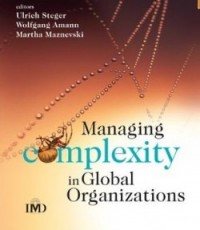by William George

Toyota’s ever-widening problems are a tragic case study in how not to lead in crisis.
Disingenuous quasi-apologies and disjointed plans for resolution have been Toyota’s substitute for crisis response. As accounts pour in about declining quality, the company parades out relatively unknown mid-level managers to quell the firestorm.
It won’t work. “You live by the sword; you die by the sword.” Toyota’s weapon of choice has always been quality, a competitive advantage that prompted many Americans to stop buying GM and Ford brands. Toyota can only regain its footing by transforming itself from top to bottom to deliver the highest quality automobiles.
When terrorists laced Tylenol capsules with cyanide in the mid-1980s, Johnson & Johnson CEO Jim Burke understood his company credo challenged him to put the needs of customers first. Although J&J was not responsible for these problems, Burke nevertheless recalled every Tylenol product from the market.
This is not a crisis of faulty brakes and accelerators, but a leadership crisis. During Chrysler’s 1980s crisis, CEO Lee Iacocca took charge, restoring consumer trust and prosperity. When General Motors emerged from bankruptcy last summer, Chairman Ed Whitacre became the trustworthy, determined face of the company’s comeback.
Toyota needs a credible leader with a strong, cohesive plan. Mr. Toyoda is anything but. His uninspired words of optimism from Davos only unnerved customers and U.S. regulators. Meanwhile, Ford and GM are working hard to regain the market share they lost at Toyota’s expense.
How can Akio Toyoda get Toyota back on track? I offer recommendations based on my recent book, 7 Lessons for Leading in Crisis.
1: Face reality, starting with yourself. Faced with multiple reports of accidents from sticking accelerators, Toyota blamed the problems on stuck floor mats and panicky drivers. Instead, Toyota should acknowledge that its vaunted quality system failed. CEO Toyoda should take personal responsibility by saying that he pushed too hard for growth and neglected quality. By admitting his errors, he gives every Toyota employee permission to acknowledge mistakes and to get on with correcting them, instead of denying reality.
2: Don’t be Atlas; get the world off your shoulders. Toyoda cannot expect to solve problems of this magnitude himself. Instead, he needs a crisis team reporting directly to him, working 24/7 to get problems fixed—permanently. He also needs outside counsel, as he appears to be listening only to insiders who are defensive about criticism. He should add the world’s top quality experts to his fix-it team and listen carefully to their advice.
3: Dig deep for the root cause. When Toyota’s problems first surfaced, the company blamed a symptom—loose floor mats—and exonerated the accelerators. Instead, management should have required its best engineers to get to the root cause of this problem and every other quality problem being reported. This is basic engineering and quality discipline.
4: Get ready for the long haul. These problems won’t just fade away. In fact, they are likely to get worse before getting better. Just as the seeds were sown over the past ten years by placing growth ahead of customer concerns and quality, digging deep into problems will likely uncover more quality concerns that will take years to resolve. Toyota must invest heavily in corrective actions while its sales shrink and profits implode, requiring major cash resources until its reputation can be restored.
5: Never waste a good crisis. For all the pain Toyota is experiencing, this crisis provides a unique opportunity to make fundamental changes required to restore Toyota quality. The crisis is melting away the denial and resistance that existed in recent years. Employees are ready for new direction, and they are willing to make radical changes to renew the company. With Toyoda’s leadership, Toyota automobiles can be restored to the world’s highest quality.
6: You’re in the spotlight: follow True North. In a crisis, people insist on hearing from the leader. Akio Toyoda can’t send out public relations specialists or his American executives to explain what happened. Having lost sight of his company’s True North—its values and principles—Toyoda must come out of hiding, take personal responsibility, and subject himself to intense questioning by regulators and the media. Then he should make a personal commitment to every Toyota customer to repair the damage, including buying back defective cars.
7: Go on offense; focus on winning now. Coming out of this crisis, the market will never look the same. GM and Ford are rapidly regaining market share, while the confidence of Toyota’s loyal customers is badly shaken. Toyota cannot wait until all its quality problems are resolved. It must play defense and offense simultaneously. To win, Toyota has to offer advanced features and superior quality, better value for consumers, greater safety, and improved fuel efficiency.
This is a challenging menu, and this crisis is the true test of Akio Toyoda’s leadership. Is Toyota up to these challenges? I believe this is a great company that will resurrect its reputation and restore its leadership.
Author: William George
William George is a Professor of Management Practice, Henry B. Arthur Fellow of Ethics, at Harvard Business School.
* More Working Knowledge from William W. George
* William W. George – Faculty Research Page
republished with permission of HBS Working Knowledge

